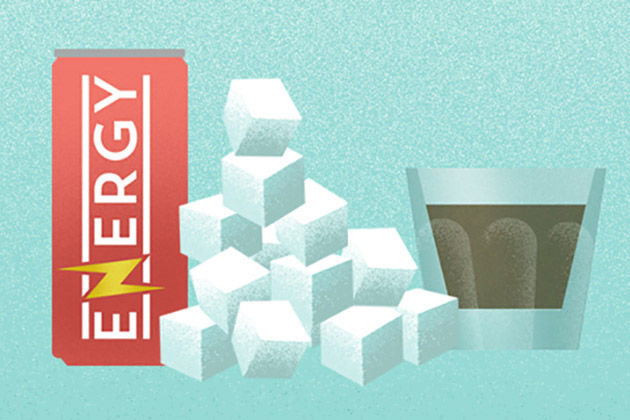How much more evidence do we need before seizing the bull by the horns? It is time to ban the sale of energy drinks to children in the UK.
In 2016 in the UK alone we consumed 679 million litres of high sugar, high caffeine drinks known as “energy drinks”. Described as the fastest growing sector of the soft drink market, they have become a major public health concern and have been subject to both a House of Commons Science and Technology Committee Enquiry (April – December 2018) and a Department of Health and Social Care consultation (which closed on 21st November 2018). In the report it published on Tuesday, the Committee found that “the current quantitative evidence alone is not sufficient to warrant a statutory ban”, though it noted that “societal concerns could justify a ban on the sale of energy drinks to children”. This conclusion is puzzling for several reasons.
Firstly, a growing body of evidence has established that energy drinks consumption, particularly by children, is associated with a wide range of harmful effects.
-
Whilst childhood and adolescence are periods of rapid growth requiring adequate sleep and good nutrition, energy drinks play a role in disrupting sleep¹
-
It is established that energy drinks are highly erosive in terms of dental health: they have low pH and a high non-reducing sugar content²
-
Consumption is also linked to increased energy intake and therefore obesity³. Hence the proposal of the UK Government to ban the sale of energy drinks to children in the second iteration of its Childhood Obesity Action Plan, published in August 2018, and the public consultation that followed.
- However, energy drinks consumption is also linked to physical symptoms such as headaches, stomach aches and sleeping problems (with some evidence of a dose-response effect), as well increased risk-taking behaviours, including binge drinking, smoking, illicit drug use, screen time and poor dietary behaviours⁴. Moreover, mixing energy drinks with alcohol increases the risk of injury and unsafe driving.⁵/ ⁶
Secondly, the Committee has failed to engage with the fact that gathering “quantitative evidence” on the impact of energy drinks on child health would be unethical (other than the aforementioned studies, which tend to involve large-scale, school-based surveys). To our knowledge, there have been no experimental studies involving children’s use of other age-restricted products such as alcohol, tobacco, aerosols, solvents, fireworks, knives, crossbows, petrol or even Christmas crackers (sales of which are restricted in England to those aged 12 and over https://www.thurrock.gov.uk/underage-sales/age-restrictions). Why should energy drinks be subjected to a higher standard of evidence than any of these products?
Thirdly, the evidence base has not prevented other countries from regulating the sale of energy drinks to children. In Europe, Lithuania introduced a ban on the sale of these drinks to under 18s in 2016, followed by Latvia, whilst Norway and Sweden are reflecting on similar legislation. It is therefore unclear why the Committee has concluded that existing evidence is insufficient to adopt a similar law in the UK. The rationale seems to lie in the absence of a “causal link” between energy drinks consumption and childhood obesity, tooth decay and other diet-related diseases. This arguably demonstrates a lack of understanding by the Committee of the strategies required to address complex and multifactorial nature of these diseases.
It is indeed difficult to establish a causal link between the various measures adopted and the burden of non-communicable diseases: no single policy option can realistically tackle broad phenomena, such as growing obesity rates or tooth decay, when taken in isolation. Governments must ensure that public health is effectively protected, and they can invoke the precautionary principle in the event of any outstanding scientific uncertainty regarding the impact of energy drinks consumption on public health. Hence, probably, the acknowledgement from the Committee that “it would be legitimate for the Government to go beyond the evidence that is available at the moment and implement a statutory ban based on societal concerns and evidence, such as the experience of school teachers and pupils”. The logic of their reasoning is nonetheless difficult to follow. There is no doubt that the Government should introduce legislation banning the sale of energy drinks to children, following the lead of Lithuania and Latvia. This would not amount to going beyond the evidence; it would be acting on the basis of existing evidence. It is this body of evidence that has prompted very real and major societal concerns of the effects of energy drinks on our children’s health.
Fourthly, the call of the Committee for more effective labelling measures should not be envisaged as providing an alternative to a ban on the sale of energy drinks to minors; it should only be viewed as complementing such a ban. This is all the more so as labelling could increase existing health inequalities. Children and young people from all backgrounds consume energy drinks. However, as the Committee has noted “energy drinks are consumed disproportionately by disadvantaged groups”. There may indeed be a link between regular consumption of energy drinks and eligibility for free school meals (FSM), which is often used as an indicator of lower socio-economic status. The 2018 Health-Behaviour in School-Aged Children Survey found that, among those who reported that they drank at least one energy drink per day, 23% received FSM, whereas those who said that they never drank energy drinks or did less than once a week, 11% received FSM (compared to 13% of FSM recipients across the whole sample). A study conducted in schools in the South West England also found that being eligible for FSM was significantly associated with drinking energy drinks once a week or more (Richards and Smith, 2016).
Finally, the Committee does not seem to be aware that the Government has a duty to protect the rights of all children to the enjoyment of the highest attainable standard of health and to adequate nutritious food. Energy drinks have no place in a healthy diet. Shifting the responsibility of protecting them onto business actors, such as food manufacturers or food retailers, is highly problematic, not only because a voluntary ban will fail to create the level playing field within which all these actors should operate, but also because it will fail to protect child health and their rights and cannot therefore contribute to an effective obesity prevention strategy. The Responsibility Deal has failed; regulatory measures that apply to all and are duly enforced are required to address the growing burden of obesity, tooth decay and other diet-related diseases. The conclusion that a statutory ban would be too restrictive is ideological rather than grounded in evidence. A statutory ban is the most likely measure to ensure that children and young people are effectively protected from the many harmful effects of energy drink consumption.
The authors:
- Professor Amandine Garde, Professor of Law and Director of the Law & Non-Communicable Diseases Unit at the University of Liverpool. @AmandineGarde
- Dr Amelia Lake, Associate Director of Fuse – the Centre for Translational Research in Public Health and Reader in Public Health Nutrition at Teesside University. Amelia is a Dietitian and registered Public Health Nutritionist. @Lakenutrition
- Dr Shelina Visram, Programme Lead of the Complex Systems Research Programme for Fuse – the Centre for Translational Research in Public Health and Senior Lecturer in Public Health at Newcastle University. @ShelinaVisram
The views expressed here are those of the authors and do not necessarily reflect those of the author’s employer or organisation.
- Do sleeping habits mediate the association between time spent on digital devices and school problems in adolescence?
- Short Communication: In vitro assessment of Erosive Potential of Energy Drinks
- Systematic review of the literature on the effectiveness of product reformulation measures to reduce the sugar content of food and drink on the population’s sugar consumption and health: a study protocol
- Consumption of energy drinks by children and young people: a rapid review examining evidence of physical effects and consumer attitudes
- Alcohol Mixed With Energy Drinks and Risk of Injury: A Systematic Review
- Alcohol mixed with energy drink use among U.S. 12th-grade students: Prevalence, correlates, and associations with unsafe driving

















